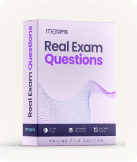ACAMS CAMS7 - Certified Anti-Money Laundering Specialist (the 7th edition) Exam
Page: 1 / 24
Total 119 questions
Question #1 (Topic: Exam A)
The financial industry relies heavily on rules-based approaches to transaction monitoring to detect suspicious activities.
Scenario-based systems use technology and algorithms to identify: (Choose three.)
Scenario-based systems use technology and algorithms to identify: (Choose three.)
A. fraudulent identities involving stolen or manufactured identification.
B. suspicious behavior involving a transaction that occurs at an unusual time of day.
C. hidden beneficial owners.
D. transaction patterns involving transactions that exceed a certain dollar amount.
E. anomalies involving a transaction that occurs in a location far away from the customer's usual spending patterns.
Answer: BDE
Question #2 (Topic: Exam A)
A financial institution plans to implement adverse media screening with Artificial Intelligence (AI)/Machine Learning (ML) capabilities During testing, the system produces high volumes of irrelevant news articles for review.
What is the best way to address this issue?
What is the best way to address this issue?
A. Narrow the media sources to avoid unrelated articles
B. Rely on manual filtering by investigators
C. Increase the frequency of updates to media sources
D. Adjust AI/ML models to focus on high-risk keywords/phrases from reputable media sources
Answer: D
Question #3 (Topic: Exam A)
When services are provided by a trust and company service provider (TCSP) connected to a high-risk country, which of the following may present an immediate financial crime risk concern?
A. Management structure
B. Governance framework
C. Asset structure
D. Origin of the funds
Answer: D
Question #4 (Topic: Exam A)
Which benefits are most commonly associated with transitioning from a rules-based approach to artificial intelligence (AI) and machine learning-based tools in transaction monitoring? (Choose three.)
A. Reduction in the number of false positives in long term
B. Complete automation of compliance processes
C. Elimination of the need for human oversight
D. Increased flexibility in adapting to changing financial crime risks
E. Enhanced ability to detect emerging patterns and anomalies
Answer: ADE
Question #5 (Topic: Exam A)
Why is it important to use multiple sanctions lists, such as United Nations (UN), Office of Foreign Assets Control ("OFAC"), and European Union ("EU") lists, in name screening systems?
A. To avoid sanctions breach related to payments
B. To avoid onboarding customers previously exited due to true match
C. To meet international regulatory requirements and identify risks across jurisdictions
D. To be in line with the risk appetite statement
Answer: C
